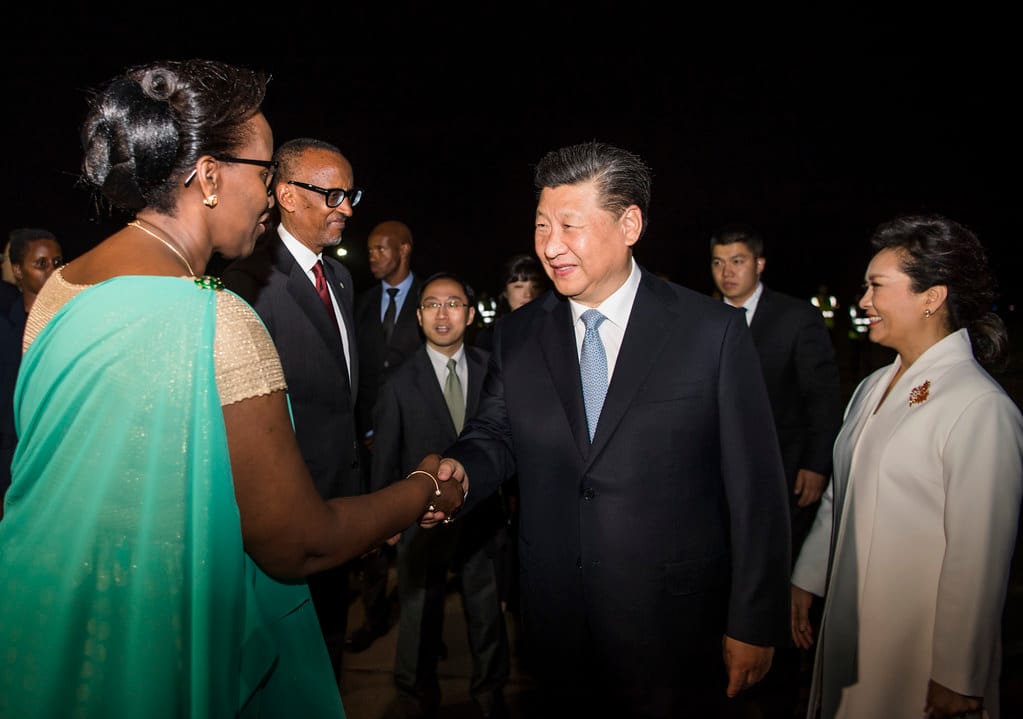
The recent convergence of Chinese President Xi Jinping, Russian President Vladimir Putin, and North Korean leader Kim Jong Un on a Beijing red carpet on September 3, 2025, presented a visually potent tableau of what appeared to be a united front against Western influence. This carefully choreographed appearance, preceding a massive military parade marking the 80th anniversary of Japan’s surrender in World War II, was clearly designed to project an image of formidable solidarity and China’s proclaimed “unstoppable” rise as a global leader. The spectacle, observed by 26 world leaders, thousands of troops, and over 50,000 spectators, immediately drew global attention and sparked intense debate among analysts and intelligence communities.
Despite the powerful optics, a deeper examination reveals a more intricate and often contradictory reality behind this show of strength. Experts across various intelligence and analytical circles quickly cautioned against facile interpretations of a monolithic “axis of authoritarianism.” While the leaders themselves engaged in genial chats and exchanged symbolic gestures, the consensus suggests that the event was less a declaration of an impenetrable bloc and more a strategic photo opportunity. It aimed to send a pointed rhetorical message directly to the United States and its Asian allies, yet it simultaneously papered over a myriad of underlying tensions and divergent interests among the participating nations.
This article will delve into the complexities inherent in this purported alliance, dissecting the multiple layers of strategic calculation, cautious diplomacy, and inherent fragility that characterize the relationships between Beijing, Moscow, and Pyongyang. We will explore the critical insights from former senior intelligence officials and leading analysts who see not a seamless integration of power, but rather a sophisticated “game of mimicry” and a collection of self-serving motives. By examining the details surrounding the Beijing summit, we aim to provide a comprehensive understanding of the fissures that persist despite the outward display of unity, offering a nuanced perspective on this evolving geopolitical landscape.
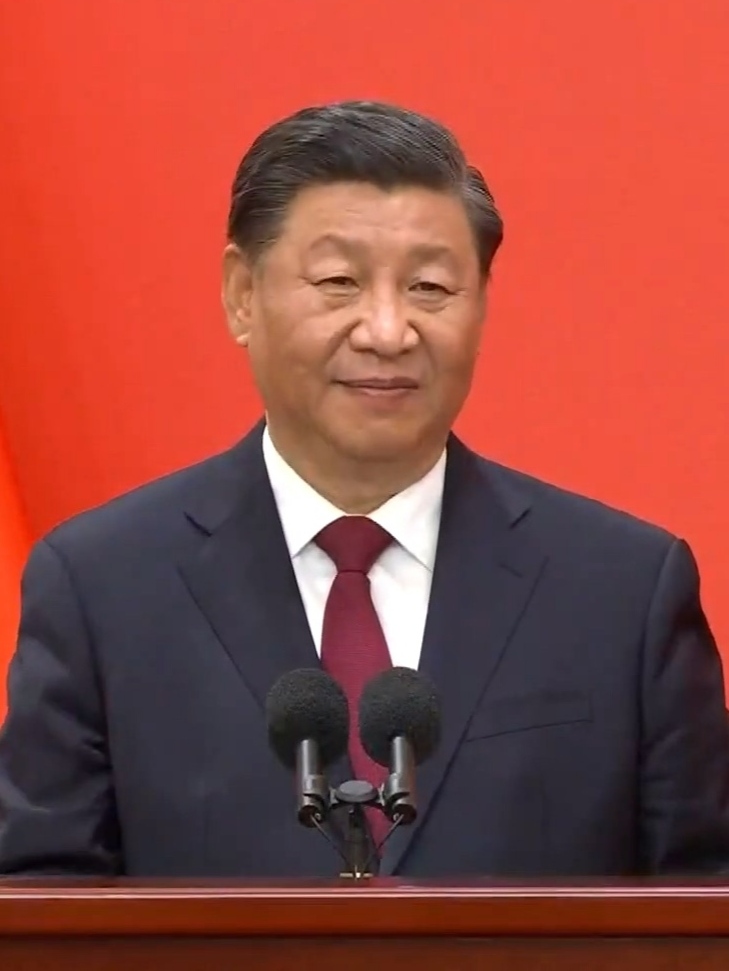
1. **The Powerful Visual of Unity vs. Analytical Skepticism**The image of Xi Jinping, Vladimir Putin, and Kim Jong Un standing together on a Beijing red carpet was undeniably striking, designed to convey an impression of formidable unity against Western powers. This visual tableau, set against the backdrop of a grand military parade, served as a deliberate rhetorical message. It aimed to showcase China’s “unstoppable” rise and its vision of an alternative global order, implicitly challenging the prevailing Western-led international system. The presence of these three leaders, particularly Kim Jong Un, was curated to project a sense of a coherent and powerful anti-Western coalition.
However, many analysts immediately viewed this display with considerable skepticism, questioning the true depth of the proclaimed solidarity. Beth Sanner, a former senior intelligence official and CNN contributing analyst, characterized the event as primarily a “photo op aimed directly at the US and its Asian allies.” Her assessment highlighted that the carefully constructed facade was, in reality, papering over significant “underlying tensions, in particular between China and North Korea.” This critical perspective suggests that the visual unity was largely superficial, serving a propaganda purpose rather than reflecting genuine trilateral cooperation.
Sanner further articulated her doubt about the event translating into “meaningful trilateral cooperation,” underscoring a pervasive analytical sentiment that looked beyond the immediate optics. Rudyard Griffiths, analyzing the striking images, noted that the presence of Kim Jong Un, “the baddest of bad guys,” at the forefront with Xi and Putin was a “remarkable image.” He observed that “all of this, again, is carefully choreographed, carefully thought through,” indicating the deliberate nature of the message being sent. Despite the clear intent to signal collective strength, the initial expert reaction quickly pointed to the potential for underlying fragility and strategic disingenuousness within the grouping.
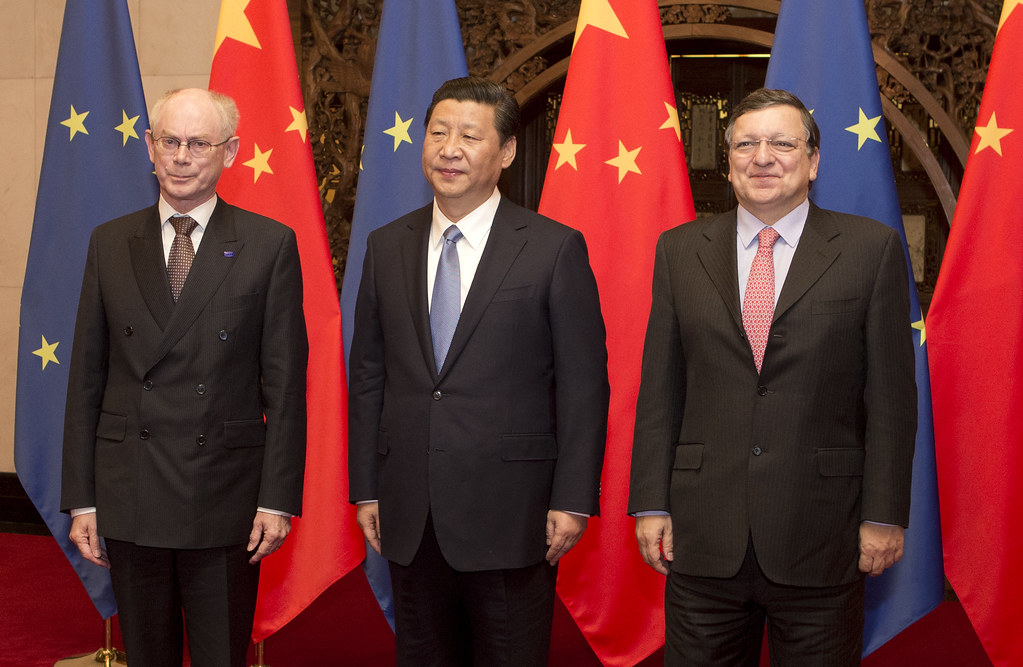
2. **The ‘Bloc’ or ‘Convenience Alliance’ Debate**The joint appearance of the three leaders did little to resolve a longstanding and critical debate within the US intelligence community regarding the nature of their relationship. For years, analysts have grappled with whether these three nations should be considered a cohesive “bloc” acting in concert, or merely a collection of “three opponents of the West who work together when it suits them.” The Beijing event, while visually impactful, did not provide concrete evidence to definitively settle this ongoing discussion, leaving the fundamental question of their true alignment unanswered.
This debate carries significant implications for Western policy and security planning, as the distinction between a formal, coordinated bloc and a looser, opportunistic alignment dictates the appropriate strategic response. If a true bloc were forming, it would imply a higher degree of shared objectives, integrated planning, and mutual commitment, posing a more consolidated threat. Conversely, if their cooperation is primarily transactional and based on temporary convergences of interest, their collective threat might be more fragmented and less predictable. The experts speaking to CNN after the event consistently leaned towards the latter interpretation, viewing the unity as conditional.
Sean Speer, co-founder and editor at large, underscored the conceptual discussions about the “end of unipolarity and the Balkanization of the world,” with an “American orbit and a Chinese orbit.” He suggested that the images “brought home” the idea of China “building this network of countries that are subscribing to its conception of global trade, domestic governance, technology, and all the rest.” While acknowledging this broader challenge to the Western system, Speer’s commentary implicitly recognized the lack of a fully integrated, cohesive bloc, instead portraying a network of influence rather than a unified command structure. The Beijing meeting, therefore, served more as a stark visual illustration of an ongoing global shift than a definitive answer to the “bloc” question.
Read more about: Decoding Car Dealer Pricing: An In-Depth Guide for Consumers to Navigate Buying and Selling

3. **Lack of Substantive Defense Cooperation**Despite the powerful rhetoric surrounding the show of unity, there were no outward signs of a substantive change or deepening in defense cooperation between any of the three nations. This absence of tangible military commitments was closely monitored by US security officials, particularly given recent developments that suggested a potential for closer military ties. The lack of formal defense agreements or explicit statements on increased military interoperability stands in contrast to the symbolic display of solidarity, highlighting a significant fissure in the supposed alliance.
One area of particular interest for US security officials has been North Korea’s reported offers to provide its soldiers to fight on Russia’s behalf in Moscow’s war against Ukraine. While South Korean and American intelligence reports indicate that North Korea has transferred missiles, specifically KN-23s, to Russia and sent up to 15 military personnel, this remains largely a bilateral transaction between Moscow and Pyongyang. The trilateral gathering in Beijing did not publicize any new, broader defense frameworks or coordinated military strategies involving China in these direct combat-related endeavors, reinforcing the idea of a transactional partnership rather than a comprehensive defense alliance.
Furthermore, Atlantic Council and BBC analysts have emphasized that despite the declarations of “unity,” underlying competition persists, and “neither country is in a hurry to make direct commitments to its allies.” This cautious approach, particularly from China, limits the potential for deep military integration. While Russia might seek to strengthen its own resilience through such partnerships, China’s priority remains ensuring stability near its borders and minimizing risks to its own economy. The absence of demonstrable progress in trilateral defense interoperability or explicit commitments serves as a crucial indicator that the “alliance” is far from a unified military bloc, and its members retain distinct, often self-preserving, strategic objectives.

4. **Xi’s Caution vs. Putin’s Embrace of Kim**A notable divergence in approach exists between Chinese President Xi Jinping and Russian President Vladimir Putin regarding North Korean leader Kim Jong Un, particularly concerning Pyongyang’s nuclear status. While Putin has visibly embraced Kim, signaling Moscow’s acceptance of North Korea as a nuclear state, Xi remains considerably warier of the “mercurial dictator.” This difference in posture reveals a significant crack in the perceived unity, indicating distinct national interests and strategic calculations at play within the authoritarian grouping.
When the Russian defense minister visited Pyongyang in 2023 to attend a military parade, it was widely interpreted as a formal signal from Moscow that it acknowledges North Korea’s nuclear capabilities. This embrace provides Kim Jong Un with a degree of international legitimacy and strategic support, particularly in the face of Western sanctions and condemnation. Putin’s willingness to engage openly with Kim, including traveling together and exchanging symbolic gestures after the Beijing parade, further solidifies this Russian acceptance and deepens their strategic partnership, as evidenced by announced agreements to strengthen energy and military-technical cooperation.
In stark contrast, China’s Xi Jinping has “hasn’t given the full stamp of approval” to North Korea’s nuclear ambitions, according to Syd Seiler, a former senior intelligence official specializing in North Korea. While China acknowledges the burgeoning relationship between Russia and North Korea and is unlikely to actively disrupt it, Beijing’s caution stems from its own fears of Pyongyang’s unpredictability. This careful balancing act indicates that while China is willing to send a message of unity against the West, it maintains a degree of strategic distance from North Korea’s more provocative policies, especially those concerning nuclear proliferation, to protect its own long-term stability and economic interests.
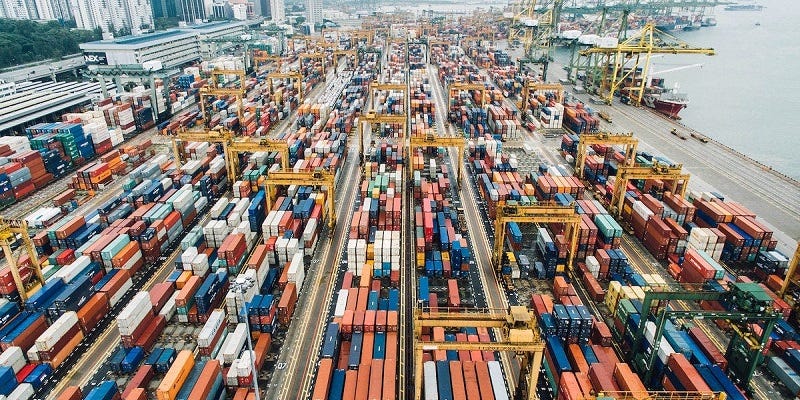
5. **China’s Strategic Economic Engagements Amidst the Show**The Beijing military parade and the high-profile gathering of leaders, while projecting a strong political message, occurred alongside significant bilateral economic engagements that underscore China’s broader, more pragmatic strategic agenda. The day before the parade, Russia and China reached a framework agreement on a new natural gas pipeline. While many details remain to be agreed upon, this memorandum clearly signals China’s willingness to continue flouting Western efforts to economically isolate Russia over its 2022 invasion of Ukraine, positioning China as a critical economic lifeline for Moscow.
Furthermore, the parade followed a regional summit in nearby Tianjin, which was headlined by a series of bilateral economic agreements between India and China. Indian Prime Prime Minister Narendra Modi was present for this summit, engaging in warm exchanges with Xi and Putin that went viral on social media. This indicates that China is not solely focused on cultivating an anti-Western bloc but is simultaneously pursuing its economic interests and maintaining relations with key regional players, even those with complicated relationships like India. The juxtaposition of these diverse diplomatic and economic activities highlights the multi-faceted nature of China’s foreign policy, which extends beyond purely ideological alignments.
These economic initiatives reveal China’s calculated approach to global influence, balancing political shows of force with tangible economic gains. Ely Ratner, a former Pentagon official, noted that China’s rise is explicitly designed to displace the United States, and these economic agreements are integral to that ambition, allowing China to build an “alternative network to challenge Western liberal democratic capitalism.” By forging economic ties with partners like Russia and engaging in bilateral agreements with nations like India, China strategically strengthens its position on the global stage, demonstrating that its grand geopolitical strategy is intertwined with robust economic diplomacy, even as it stages events that suggest a more confrontational stance.
Read more about: China’s Parade of Power: A New Chapter in the World’s Greatest Military Rivalry, Signifying a Shifting Global Order

6. **The Military Parade as a Display of Chinese Power and ‘Alternative Order’**The military parade itself, held in Beijing on September 3, 2025, was not merely a ceremonial event but a visually impressive and strategic display of China’s growing military might and its aspirational role as a global leader. Analysts universally agreed that the parade served as a clear effort to demonstrate China’s rise on the world stage, showcasing its ongoing process of growing and modernizing its military. The event featured a formidable array of new weaponry, including Intercontinental Ballistic Missiles (ICBMs), a hypersonic cruise missile, and advanced drones, underscoring Beijing’s significant advancements in defense technology.
This formidable show of force was interpreted by experts as a direct message regarding China’s intentions and its “vision of an alternative order with an ‘unstoppable’ China in the lead,” as described by Beth Sanner. Ely Ratner further emphasized that this rise is “explicitly designed to displace the United States,” indicating the profound geopolitical implications of China’s military modernization. The parade displayed not only China’s hard power but also its soft power, aiming to project an image of a confident and capable nation ready to lead a new global configuration.
However, despite the grandeur and advanced weaponry, analysts also cautioned against “breathless assessments of Xi’s success at casting China as a global leader.” Ratner pointed out crucial absences, stating, “The Japanese weren’t there, the Europeans weren’t there, [Indian Prime Minister Narendra Modi] was there for the [Tianjin summit] but he left before the parade, which I think was no accident.” These omissions suggest that while China can project an image of power and an “alternative order,” its appeal and influence are not universally embraced, particularly among key economic and military powers. The parade, therefore, was a potent symbol of ambition and capability, yet one with inherent limitations in its global reach and acceptance.
Read more about: The World Is Watching: China’s Military Parade Signals a Reshaping of Global Power Dynamics

7. **Key Absences Undermining China’s Global Leadership Claim**While the Beijing military parade was meticulously choreographed to project China’s formidable rise and its aspirational role as a global leader, the true measure of its success in establishing an “alternative order” was quickly tempered by the conspicuous absences of several key international actors. The event aimed to showcase China’s ongoing modernization of its military and its capability to lead a new global configuration, presenting a powerful display of both hard and soft power.
However, Ely Ratner, a former Pentagon official, critically observed that the Japanese and the Europeans were notably absent from the grand spectacle. These omissions are not trivial; they highlight a significant gap in China’s appeal and influence, particularly among the world’s most important economic and military powers. Despite the impressive display of advanced weaponry, including ICBMs and hypersonic missiles, the lack of representation from these critical nations suggested a limitation to China’s reach.
Further underscoring this point was the strategic decision of Indian Prime Minister Narendra Modi. Although Modi had participated in a regional summit in Tianjin and engaged in warm exchanges with Xi and Putin that went viral, he pointedly left before the military parade itself. Ratner interpreted this as “no accident,” a clear signal that while India is willing to engage economically, it is cautious about endorsing any overt military or political alliance that might be perceived as anti-Western or a direct challenge to the existing global order. Public sentiment in India against China, especially after the 2020 Galwan Valley clashes, also makes such a display of military appreciation unfeasible for Modi.
These collective absences lead analysts like Beth Sanner to caution against “breathless assessments of Xi’s success at casting China as a global leader.” The reality, as Ratner concluded, is a “more mixed picture than China is winning, and America is losing.” While China undoubtedly enhances its influence among nations critical of Western dominance, this network still excludes the majority of the world’s most significant economies and militaries, revealing the inherent limitations in Beijing’s bid for universal global leadership.

8. **Beijing’s Strategic ‘Game of Mimicry’ and Global Chessboard**The gathering of Xi, Putin, and Kim in Beijing, far from signaling the immediate birth of a cohesive tripartite bloc, was interpreted by many experts as a sophisticated “game of mimicry.” This strategic play involves China observing and reacting to the global chessboard, carefully testing the boundaries of its influence and the reactions of the United States and its allies. Beijing, in this sense, is “playing Go”—a nuanced, long-term strategy game where subtle moves accumulate to achieve broader dominance.
China’s objective through this mimicry is to explore the possibility of asserting a leadership position in a world where the West’s traditional influence is perceived to be waning. It projects an image of an alternative order without necessarily committing to the integrated, formal alliance structures that would entail mutual defense obligations or significant risks to its own economic stability. This allows China to leverage the anti-Western sentiment shared by Russia and North Korea while maintaining strategic flexibility.
Sean Speer, co-founder and editor at large, underscored how the images from the parade “brought home” the idea of China “building this network of countries that are subscribing to its conception of global trade, domestic governance, technology, and all the rest.” This network represents a challenge to Western liberal democratic capitalism, but it is a network of influence, not necessarily a rigid military pact. China’s strategic game involves demonstrating the viability of this alternative without fully embracing the liabilities that might come with a direct, overt confrontation.
Through this calculated approach, Beijing effectively sends a powerful message to Washington and its allies about a shifting global dynamic, all while minimizing its direct exposure to the more unpredictable actions of partners like North Korea. It enables China to cultivate a perception of collective strength and an emerging counterweight to Western hegemony, without sacrificing the caution and strategic distance necessary to protect its own long-term interests and minimize risks to its thriving economy.
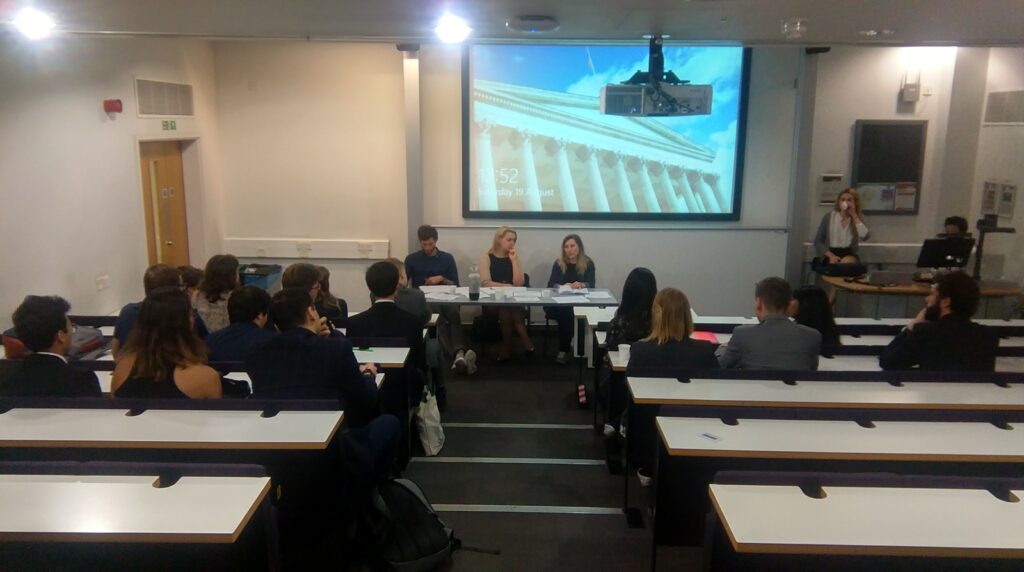
9. **Distinct Motivations: Russia’s Disruption vs. China’s Stability**Beneath the surface of projected unity among China, Russia, and North Korea lie deeply divergent national interests and strategic motivations, making the prospect of a truly cohesive alliance highly problematic. While all three nations may share an anti-Western posture, their individual objectives often clash, revealing the inherent fragility of their purported solidarity.
Russia, for instance, operates from a position that thrives on disruption. Diminished by the war in Ukraine and facing long-term economic isolation, Moscow’s influence increasingly depends upon destabilizing Europe and leveraging military adventurism. Its primary motivation is to strengthen its own resilience, expand the space for trade and energy deals, and secure critical military support, often through transactional partnerships like those with North Korea. This strategy is inherently designed to challenge and fracture the existing international order, regardless of the broader economic implications.
China, in stark contrast, is fundamentally driven by a need for global economic integration, stability, and sustained development. Its long-term strategic interests are intrinsically tied to predictable markets, technological advancement, and a stable international environment to maintain its economic growth and minimize risks. Beijing views its role as ensuring stability near its borders and protecting its economy, which often places it at odds with Russia’s appetite for short-term chaos and North Korea’s unpredictable provocations.
North Korea, for its part, survives through a strategy of brinkmanship and provocation. Its primary motivation is regime survival, securing international legitimacy for the Kim family, and filling its arsenal and national coffers with technology and food obtained through arms-for-aid exchanges. Pyongyang’s actions, such as nuclear weapons development and missile tests, often create regional instability that, while potentially serving Russia’s disruptive goals, pose significant risks to China’s regional stability objectives, highlighting the complex and often contradictory motivations within this grouping.
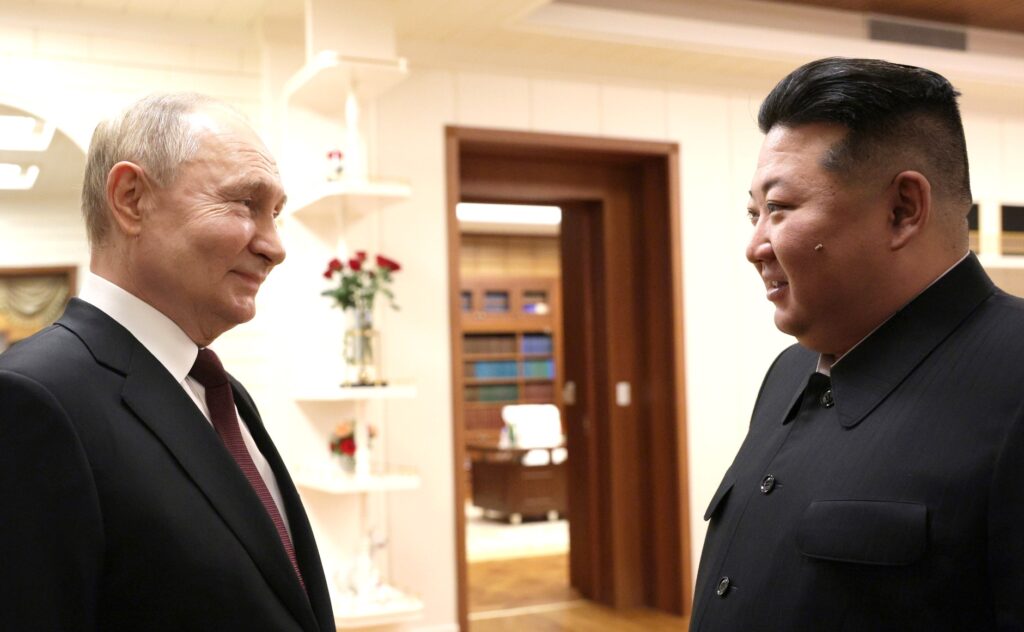
10. **Internal Fissures: China’s Wariness of Pyongyang’s Nuclear Ambitions**Despite the visual display of solidarity, a pronounced internal fissure exists within the perceived alliance, stemming from China’s enduring wariness of North Korea’s nuclear ambitions. While Russian President Vladimir Putin has openly embraced Kim Jong Un, signaling Moscow’s acceptance of Pyongyang as a nuclear state, Chinese President Xi Jinping has notably withheld his “full stamp of approval” for North Korea’s nuclear program, according to Syd Seiler, a former senior intelligence official specializing in North Korea.
This caution from Beijing is rooted in a profound fear of Pyongyang’s unpredictability. A nuclear-armed and unstable North Korea on its border represents a significant security risk for China, potentially drawing regional powers into conflict or creating refugee crises. China’s long-term interests prioritize regional stability and economic growth, which are directly threatened by North Korea’s provocative actions and its continued pursuit of nuclear weapons without international consensus.
The dynamic is further complicated by the deepening partnership between Russia and North Korea. While this growing alliance creates problems for the U.S. and its allies, it is also not “exactly great for China either,” as a top Korea watcher observed. China finds itself in a delicate balancing act: it accepts the burgeoning relationship between Russia and North Korea and is unlikely to actively disrupt it, as it serves to send a message to the West. However, Beijing simultaneously maintains a strategic distance, refusing to overtly endorse Pyongyang’s nuclear status.
This cautious approach reveals a fundamental crack in any notion of a unified authoritarian bloc. China’s strategic objectives are not perfectly aligned with those of its partners, particularly when it comes to the highly sensitive issue of nuclear proliferation. Beijing’s pragmatic, self-preserving stance demonstrates that while it may participate in “showcase of unity” events, its core national interests and fears can override the appearance of a monolithic anti-Western front.

11. **Paradoxical Omissions and the Fragility Beneath the Surface**The carefully staged show of unity in Beijing was replete with paradoxical omissions that expose the underlying fragility of the so-called “triple alliance.” One of the most telling of these was the complete absence of any explicit mention of the war in Ukraine within the summit’s final statement. This silence, despite Russia’s central role in the conflict and its clear attempts to rally international support, highlights a lack of full ideological alignment and collective commitment among the participants.
This deliberate omission indicates that while the leaders may project an image of anti-Western defiance, they are not universally prepared to endorse each other’s most contentious actions. Most states in the region, including China, have demonstrated a tendency to avoid explicit support for any single party in the “triangle” on sensitive geopolitical issues. Such strategic silences serve as a stark reminder that rhetorical unity often masks practical disunity and a cautious reluctance to become entangled in each other’s direct military or political liabilities.
Moreover, the very nature of these authoritarian regimes contributes to their inherent brittleness, despite their outward projection of strength. Matthew Parish notes that these systems “are brittle,” ruling through repression and lacking the robust mechanisms for peaceful succession or adaptation found in democracies. This structural weakness means that crises can quickly spark instability, as they lack the internal resilience to manage dissent or unexpected challenges, further underscoring the superficiality of their proclaimed unity.
Ultimately, the “loud photo shoots, hugs between leaders and spectacular parades do not always guarantee monolithicity.” The collective silence on critical global events, coupled with the internal vulnerabilities of the participating regimes, suggests that the “unity” displayed is largely a facade. It is a carefully constructed image designed to send a message, yet one that, upon closer inspection, reveals a foundation built on disparate interests and inherent fragility rather than genuine, robust cohesion.

12. **The Geopolitical Effect and the West’s Strategic Response**The spectacle of Xi, Putin, and Kim in Beijing, while revealing internal fissures, has nevertheless sent significant ripple effects across the global geopolitical landscape, prompting renewed vigilance from the West. For the United States and its allies, this authoritarian grouping is perceived as a potent indicator of potential escalation, demanding careful monitoring and strategic recalculation of defense and supply chain planning.
However, analysts are largely unanimous that the true danger lies not in the integration of a seamless, monolithic bloc, but rather in the possibility of “divided scenarios.” In these scenarios, each player within the perceived alliance might independently pursue its own divergent interests, leading to unpredictable challenges for international stability. This fragmentation of objectives means that the threat is less about a coordinated assault and more about disparate actions that collectively test Western resilience and unity.
Diplomats have specifically warned that this “showcase of unity” is a deliberate attempt to send a powerful signal to the countries of the Global South. It aims to present an alternative to the Western model of governance and international relations, suggesting that a credible, non-Western-aligned order is emerging. This strategic messaging necessitates an accelerated response planning from Washington, encompassing both defense postures and the strengthening of supply chains to counter this narrative and its potential implications.
Read more about: The Storm Shadow’s Enduring Enigma: How Advanced Missiles Reshape the Conflict in Ukraine and Challenge Russia’s Defenses
Experts are largely in agreement that the alliance, despite its high-profile public appearances, largely “exists on paper.” The interests of the individual players are simply too disparate to coalesce into a truly unified bloc capable of cohesively opposing democracies. The Beijing parade, therefore, was less the beginning of a new geopolitical era and more a “theatrical illustration of tectonic shifts.” For Ukraine and its allies, the imperative remains to meticulously monitor the evolving tactics of each participant in this “unity parade” and to work proactively to stay ahead, preserving their own room for maneuver in a complex and shifting global environment.



